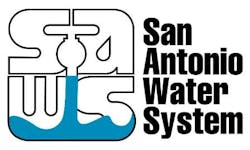"The highest ranked proposal was unwilling to assume the risk of water being cut off by the groundwater district that regulates the supply," said Puente of the project proposed by Abengoa Water LLC. "We are also unwilling to ask our ratepayers to absorb the cost of a project with potentially no water." The private proposals would have required annual payments of up to $85 million for thirty years and a rate increase of approximately 9 to 12 percent in 2019, not including infrastructure integration costs.
Groundwater conservation districts have the authority to regulate withdrawals of water from aquifers, often with little notice or process for appeal. SAWS has experienced the curtailment decisions of groundwater districts in the past. "Groundwater law in Texas leaves too much uncertainty and risk for the private and public sectors," added Puente. "I hope that the proposers and cities across the state will join SAWS in calling for the legislature to change the law so Texans can build projects to meet growing future demand."
A second proposal from Dimmit County prompted the local Wintergarden Groundwater Conservation District, from which permits would be needed, to pass a resolution to "specifically oppose the exportation of large quantities of groundwater from Dimmit and Val Verde counties, as is being considered by the San Antonio Water System." Further, the third proposal from Val Verde County has been met by fierce regional opposition and threats of legal challenges and the formation of a groundwater district with the purpose of impacting the proposed project.
Instead of committing to one of the proposed projects, SAWS plans on pursuing the expansion of brackish groundwater desalination in partnership with CPS Energy to ensure long-term supplies for the region. Costs of an expanded desalination project can be spread over time as the water is needed. A public desalination plant could also be eligible for Proposition-6 funding from the Texas Water Development Board, while the proposed projects are not.
Due to the flexibility provided by proactive planning and successful water management in recent years, an expanded desalination project can be planned for the mid-2020s, instead of the 2018 date planned for the private proposals. Outdoor water conservation efforts, for example, helped San Antonio achieve an estimated 2013 per capita water use of 127 gallons per day, surpassing the planning number of 135, allowing current water resources to stretch further and avoiding Stage-3 watering restrictions to date. Additionally, the Regional Carrizo Aquifer project is now online, and the Aquifer Storage and Recovery facility is exceeding expectations during drought.
###



